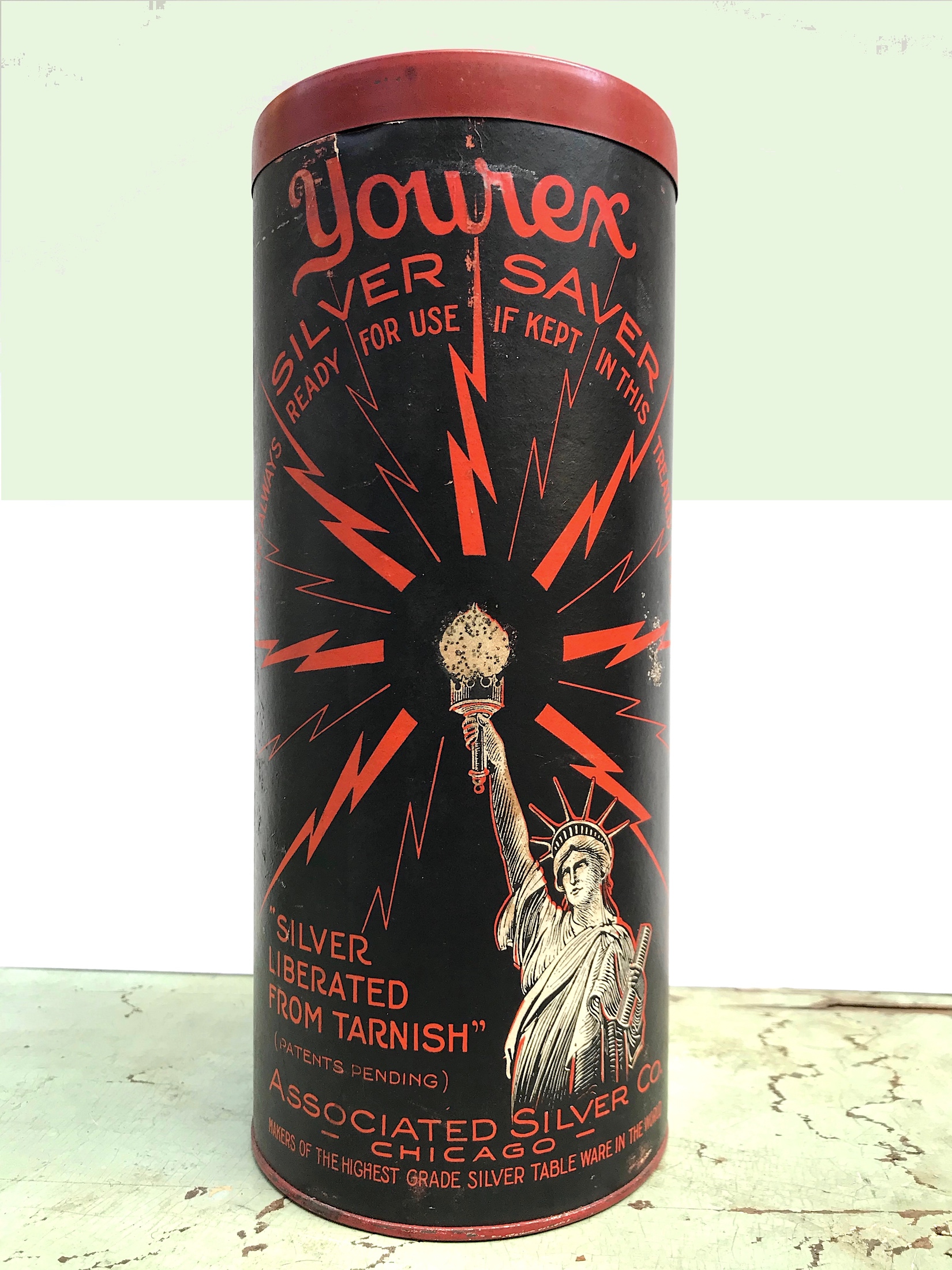
Museum Artifact: Yourex “Silver Saver” Silverware Protector, c. 1920s
Made By: Associated Silver Company, 4450 N. Ravenswood Ave., Chicago, IL [Ravenswood]
“Ladies, did you ever get your nice silverware out to use for company and find it was badly tarnished, and that you had to rub and rub and rub to get it to look right? There is another way! We have just received a shipment of the marvelous Yourex Silver Saver. It keeps silver bright. Approved and Certified by the Good Housekeeping Institute. You can’t afford to do without one at the price of TWENTY-FIVE CENTS.” –advertisement by jeweler O. F. Bearnes of Glasco, Kansas, 1924
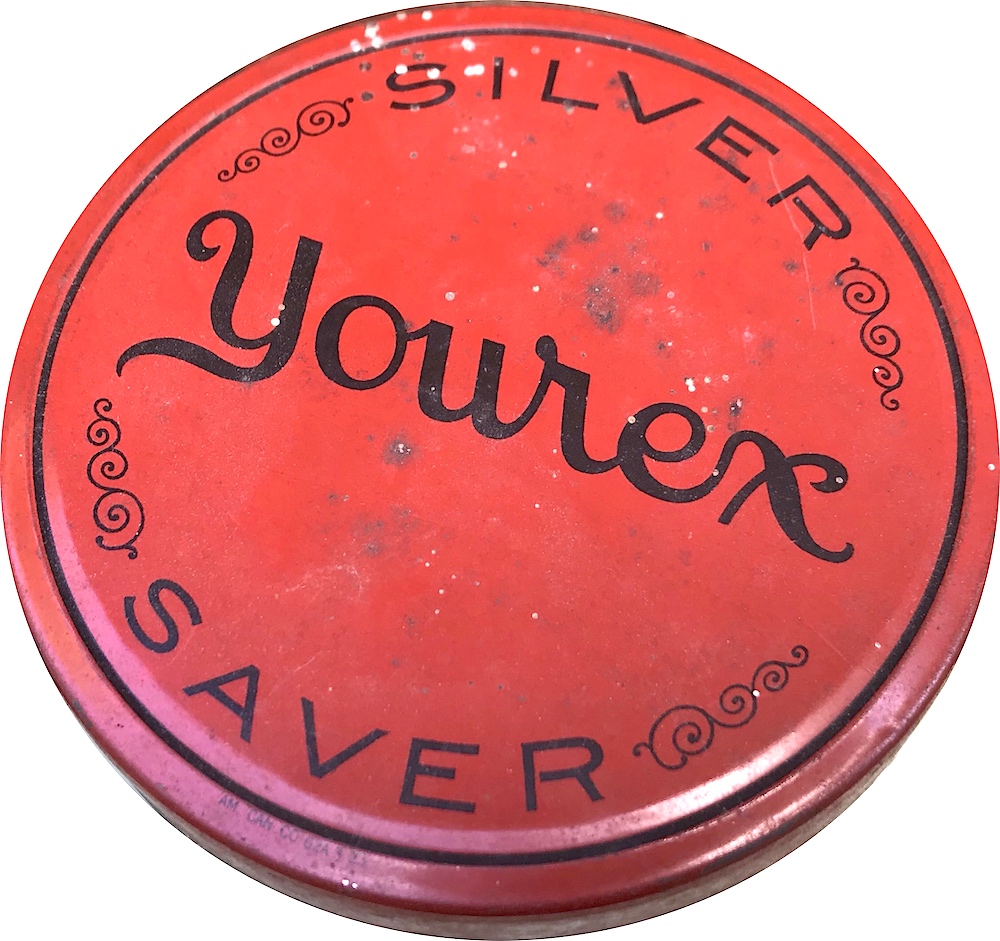 There are a couple unusual things about the former factory of the Associated Silver Company, located at the corner of Ravenswood and Sunnyside Avenue on the North Side. The first—easily visible from the elevated Montrose Brown Line station—is a full-size Airstream caravan trailer, parked conspicuously on the roof of the 100 year-old building. An architect named Edward Noonan had it hoisted up there by crane back in the ’90s just for the heck of it, and it’s been a hideaway hangout and conference room for tenants of the shared office complex ever since.
There are a couple unusual things about the former factory of the Associated Silver Company, located at the corner of Ravenswood and Sunnyside Avenue on the North Side. The first—easily visible from the elevated Montrose Brown Line station—is a full-size Airstream caravan trailer, parked conspicuously on the roof of the 100 year-old building. An architect named Edward Noonan had it hoisted up there by crane back in the ’90s just for the heck of it, and it’s been a hideaway hangout and conference room for tenants of the shared office complex ever since.
The second, less obvious quirk of the so-called “Airstream Building” can only be seen from the eastern side, above what used to be the factory entrance at 4450 North Ravenswood (that address is now defunct, replaced with 1807 W. Sunnyside Ave.). There, protruding from the brickwork and framed between the windows of the second and third floors, is a 6-foot plaster-molded approximation of the Statue of Liberty—recently repainted in a suitable seafoam green.
It’s probably been close to a century since any passerby would have realized it, but this little architectural ornament wasn’t merely put there for patriotism’s sake. Turns out, for a brief time in the 1920s, Lady Liberty was also the primary “mascot” of the Associated Silver Co. and its best known brand name, Yourex.
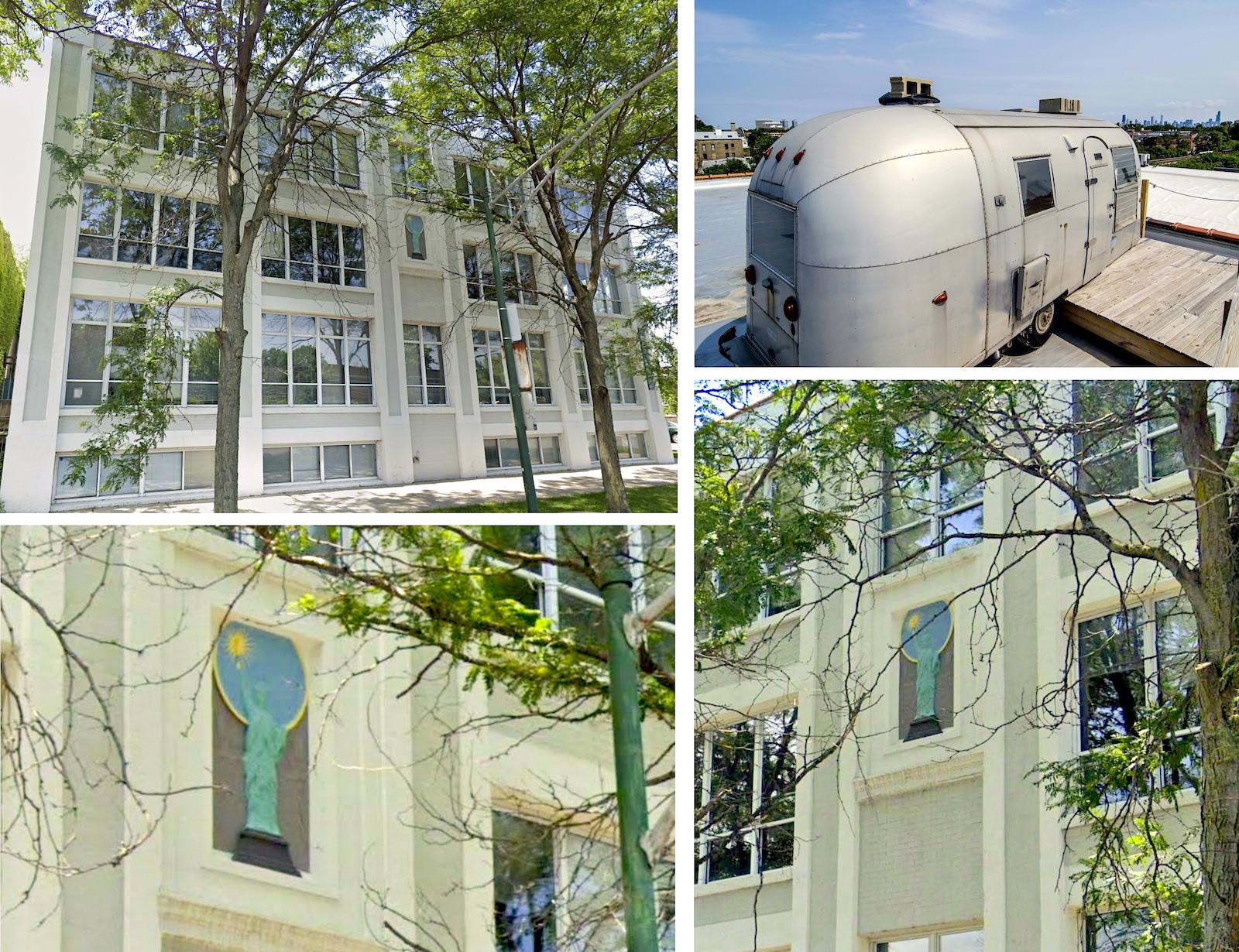
[Former Associated Silver Company building at 1807 W. Sunnyside Avenue, which includes an Airstream on the roof and a miniature Statue of the Liberty above the old Ravenswood Avenue entrance. Associated Silver left the building in 1941.]
Yourex (not to be confused with the last person you dated) was Associated Silver’s original line of low-cost, easy-to-clean flatware, marketed as the “only satisfactory substitute for sterling silver.” The same name was also attached to various products the company developed for protecting silverware from rust and discoloration, exemplified by the 10-inch tall canister of Yourex Silver Saver in our museum collection.
“Silver Liberated From Tarnish,” says the slogan on the label—which explains, I guess, why the Statue of Liberty adorns this item, as well. It’s just like that famous poem on Liberty Island: “Give me your tarnished, your rusted, your dirty salad forks yearning to shine once more.”
Okay, it might be a bit of a stretch conceptually, but the Silver Saver can is certainly quite striking in appearance—not so much for Lady Liberty’s cameo, but the jagged red lightning bolts emanating from her torch. The aesthetic seems directly inspired by the concurrent design trends of the early radio age, as seen in the original logos of companies like NBC, RCA, and the Zenith Radio Corp., among others.
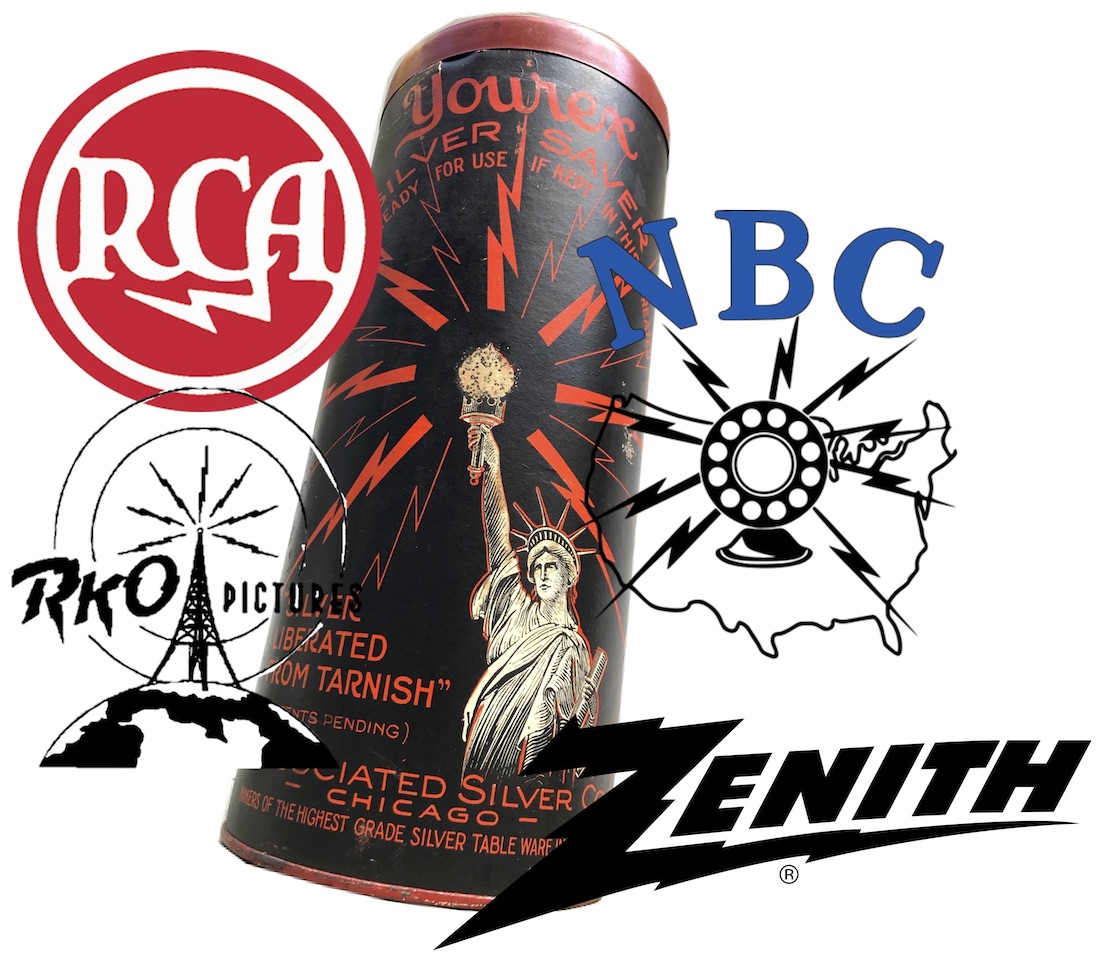 As perhaps no coincidence, Associated Silver briefly offered dealers a Yourex Radio as a promotional tie-in with its professional “anti-tarnish service”—although I’ve yet to find any evidence of one still in existence. Throughout the ‘20s and ‘30s, the company also shared its Ravenswood plant with a custom radio manufacturer—the Scott Transformer Co. (aka Scott Radio Laboratories)—so there are probably some dots to be connected there, as well.
As perhaps no coincidence, Associated Silver briefly offered dealers a Yourex Radio as a promotional tie-in with its professional “anti-tarnish service”—although I’ve yet to find any evidence of one still in existence. Throughout the ‘20s and ‘30s, the company also shared its Ravenswood plant with a custom radio manufacturer—the Scott Transformer Co. (aka Scott Radio Laboratories)—so there are probably some dots to be connected there, as well.
In any case, despite the worthy cause of liberating America’s flatware from the oppression of staining, Yourex Silver Saver wasn’t on the market for long. Most mentions of the product seem to disappear by 1930, although the executives at Associated Silver did continue to develop similar tarnish preventatives up until the company’s demise in 1941. Somewhat ironically, the miniature Statue of Liberty on Ravenswood Avenue has remained mostly untarnished after all these years, keeping a bit of the legacy of a long forgotten company alive.
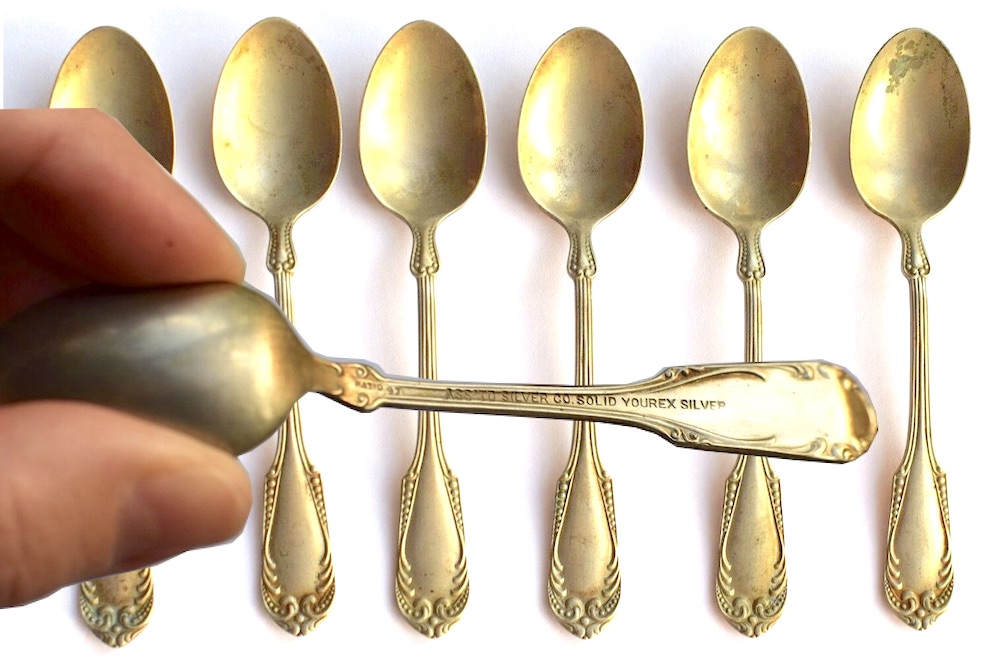
History of the Associated Silver Company, Part I: Meet Mr. Herring
Across its entire 37-year existence, the Associated Silver Co. doubled as the tale of one man’s very specific American dream.
George E. Herring was born in Kansas in 1872 and spent most of his early years in the town of Atchison, northwest of Kansas City. Among the prominent local townsfolk of his generation were Edwin Earhart and Amy Otis, whose daughter Amelia, born in 1897, wound up becoming Atchison’s most successful hometown product. In the meantime, though, George Herring might have at least been mentioned in that conversation.
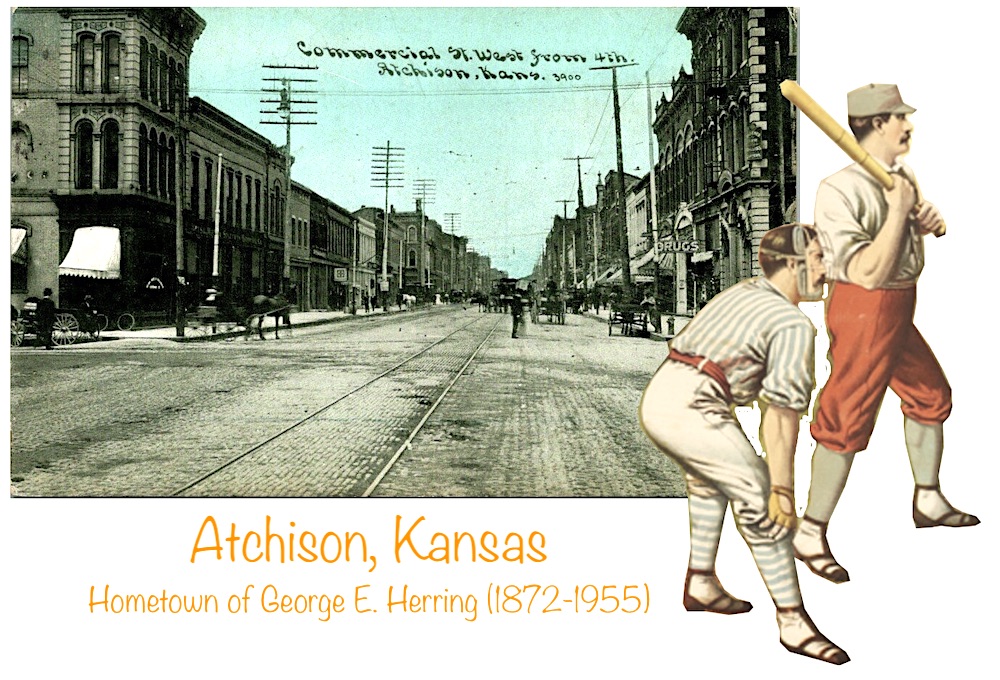
In his late teens, Herring sold newspapers for the local Atchison Daily Globe and organized a successful traveling baseball team, starring as its standout catcher. The newspaper returned the favor of salesmanship, regularly noting young George’s achievements on the diamond: “If the girls knew anything about catching behind the bat in a game of baseball,” read one blurb in 1894, “George Herring would have to hire a typewriter to decline invitations to parties.”
He did eventually find himself a girl—a local lass named Frances Brandier—and after marrying in 1897, the pair moved to Wichita, from which George started into work as a western salesman for the Curtin & Clark Cutlery Company of St. Joseph, MO. Traveling by horse into the Indian territories of Oklahoma and as far west as Denver, Herring cut his teeth in the fading Old West style before transitioning into the more efficient methods of the motor age.
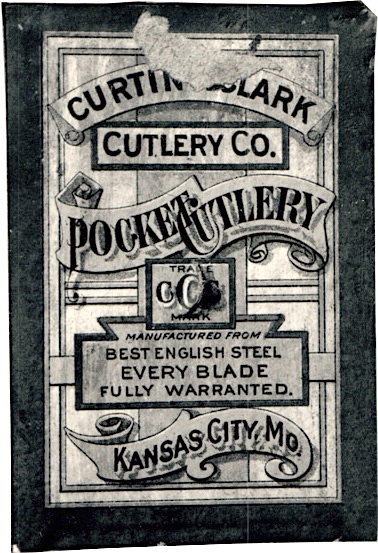 “If a man is worthy, he can get a good salary,” the Atchison Globe reported in 1900. “George Herring, who is now traveling for a wholesale hardware house, earned $450 every month he worked this year, and he is still quite a young man. . . . When he started on the road six years ago, he knew nothing about cutlery and worked for thirty dollars a month and expenses. Now, his success has become generally known, and he has an offer to take charge of a business on the Pacific coast. But he has sense enough to know when to make a change, and will continue with his present employer.”
“If a man is worthy, he can get a good salary,” the Atchison Globe reported in 1900. “George Herring, who is now traveling for a wholesale hardware house, earned $450 every month he worked this year, and he is still quite a young man. . . . When he started on the road six years ago, he knew nothing about cutlery and worked for thirty dollars a month and expenses. Now, his success has become generally known, and he has an offer to take charge of a business on the Pacific coast. But he has sense enough to know when to make a change, and will continue with his present employer.”
By 1902, Herring had become a sought-after hired gun in the West, representing several cutlery firms of the East, including the Rochester Cutlery Company and the International Silver Company of Connecticut. Now that he and Frances had a young daughter, however, George began pondering a more stable longterm lifestyle. In 1904, despite not having a ton of connections in Chicago, he went into business for himself for the first time, establishing the Associated Silver Company in a storefront at 174-176 E. Lake Street (later 152-158 Lake St.). The upstart wholesale firm employed 15 salesmen right out of the gate, and the majority of its merchandise seemed to be supplied by the aforementioned International Silver Company.
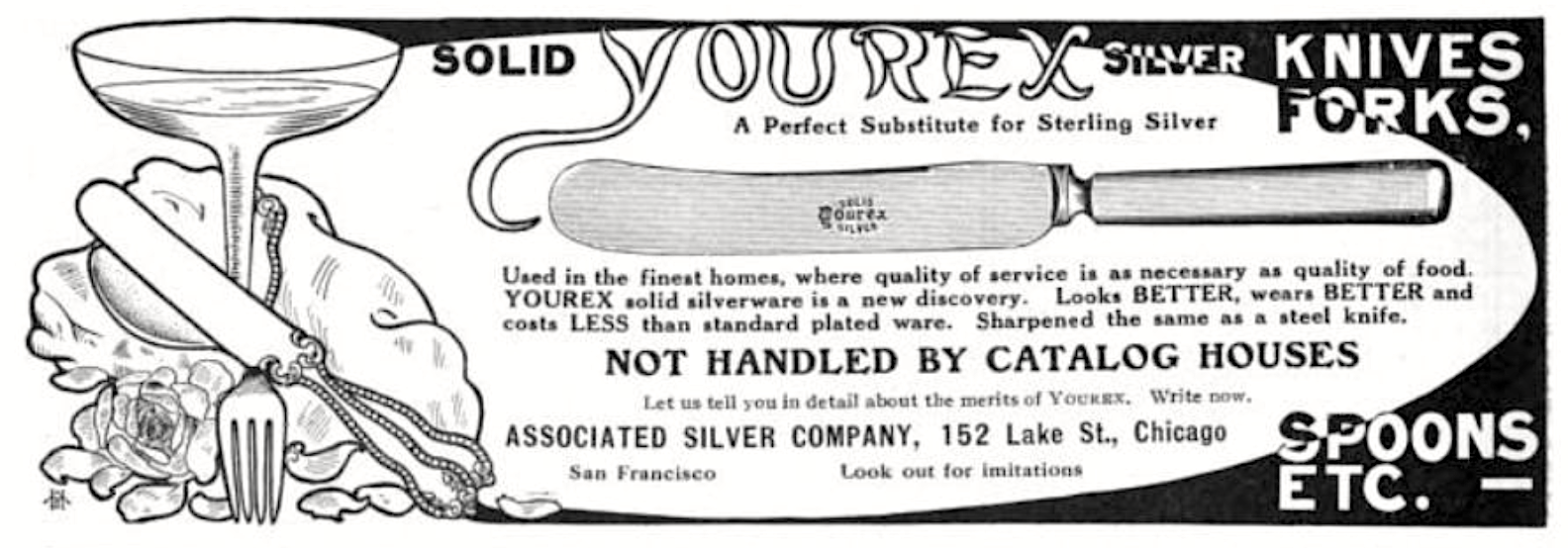
II. My Ex, Our Ex, Yourex
“Solid Yourex Silver” quickly became the Associated Silver Company’s calling card in the Midwest, representing an exclusive breakthrough, supposedly, in rust-resistant tableware.
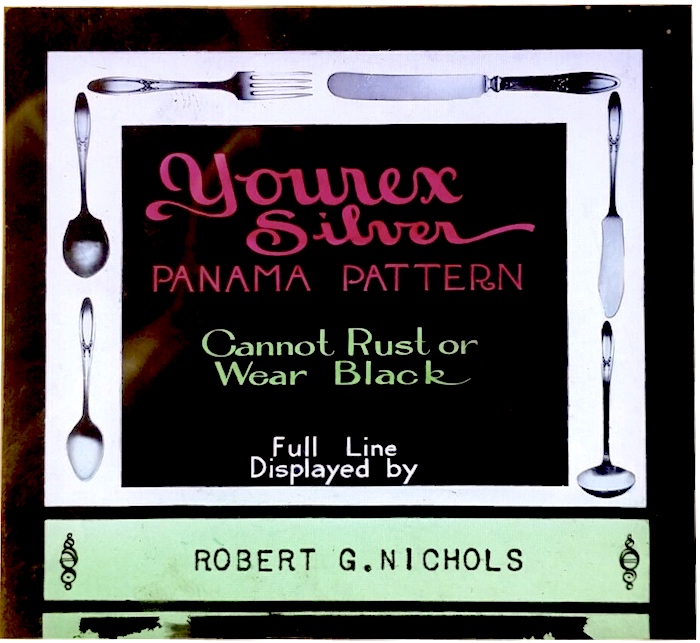 “Guaranteed for 100 Years,” read a 1907 advertisement. “Solid Yourex Silver may indeed be termed a new discovery in precious metals and it is controlled alone by us. . . . It will not tarnish as soon as Sterling Silver. Its surface can always be kept bright and fresh. It is solid and NOT PLATED. Age has no effect upon its appearance. Clean with Sapolio, Whiting or any other polish the same as you would a steel knife; there is no plating to wear off. Consequently it is of the same color clear through.”
“Guaranteed for 100 Years,” read a 1907 advertisement. “Solid Yourex Silver may indeed be termed a new discovery in precious metals and it is controlled alone by us. . . . It will not tarnish as soon as Sterling Silver. Its surface can always be kept bright and fresh. It is solid and NOT PLATED. Age has no effect upon its appearance. Clean with Sapolio, Whiting or any other polish the same as you would a steel knife; there is no plating to wear off. Consequently it is of the same color clear through.”
Heavy promotion and an aggressive traveling sales team helped get the word out, and Associated Silver soon opened offices in San Francisco and Atlanta, with advertisements warning customers to “look out for imitations or similar names.”
It’s difficult to gauge the actual scope of Yourex’s success and whether it ever truly became a household name, but Herring’s business certainly prospered enough to give his family a cozy nest egg. George also used some of his new cashflow to invest in other ventures in the 1910s, including a pure-bred cattle ranch his brother-in-law Paul Atkin managed in Kansas, and a Chicago auto parts manufacturer called the Craftsman Motor Corp., with whom Herring briefly served as VP.
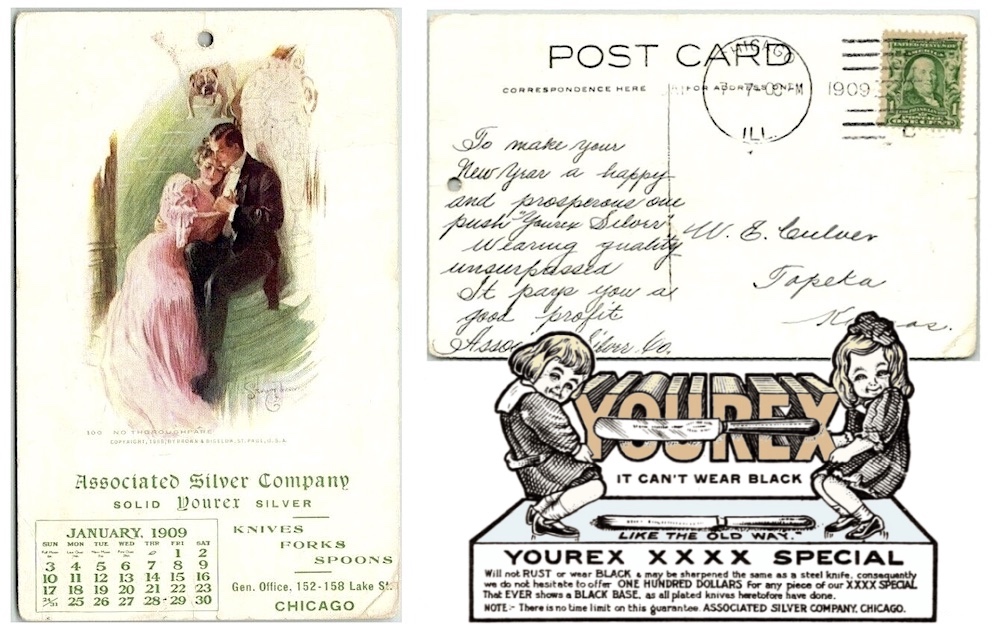
Advertisements for Yourex and other Associated Silver products are much harder to find during the 1910s, perhaps due to metal rationing during World War I, but the company had a resurgence afterward, doing a “half million dollars” of business in 1919 (equivalent to about $7.5 million today), and rolling out new flatware designs that included the “Panama,” “Marjo Nell,” and—significantly for our interests—the “Liberty.”
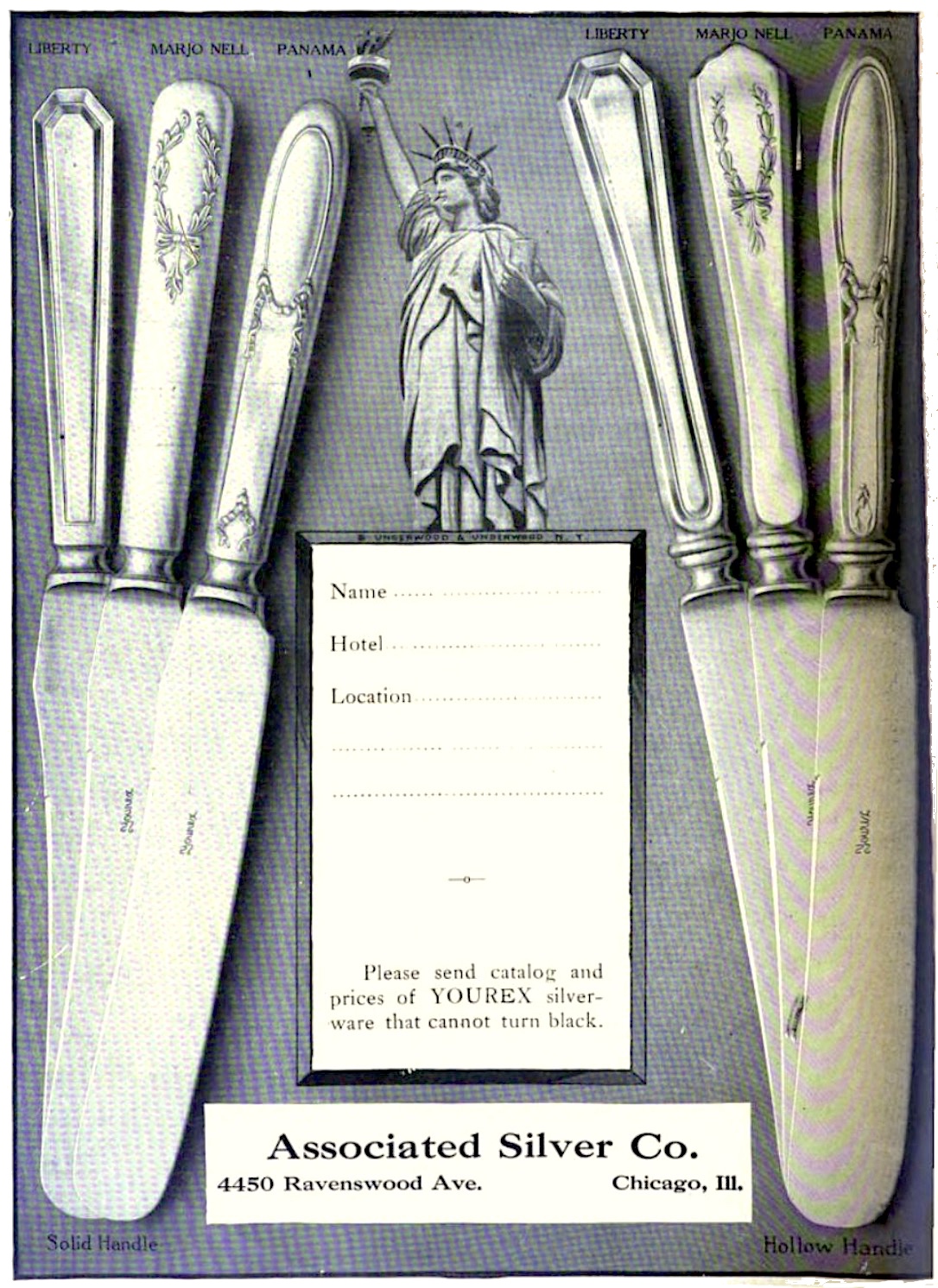 By 1920, Herring abandoned his downtown plant to establish a new factory and offices on the North Side, offering easy access to the L train, along with lots of natural light and far less bustle than Lake Street. The building was originally two stories, but a third was added in 1922, along—we presume—with Lady Liberty.
By 1920, Herring abandoned his downtown plant to establish a new factory and offices on the North Side, offering easy access to the L train, along with lots of natural light and far less bustle than Lake Street. The building was originally two stories, but a third was added in 1922, along—we presume—with Lady Liberty.
At a meeting of the Chicago Jewelers’ Association the following year, Herring spoke of the “many advantages they found in their new location at Ravenswood and Sunnyside Sts.,” according to the Jeweler’s Circular. “He stated that under no circumstances would they ever consider the Loop again, even if rents were less in the district.”
In 1925, George welcomed some old pals from Kansas to tour the factory, and the Atchison Globe reported the event in great detail. “It took more than two hours to go over the building and look at some of the samples of flat silver manufactured by that company, which makes eleven different patterns. One is called Lady Frances for Mrs. Herring. Another is called Lady Helen for [George and Frances’ daughter] Mrs. Helen Werner. The company sells silver in every state in the union with the exception of the New England states. It has a $10,000 a year man in its employ and other high salaried men.”
Among those high salaried men were a few recent additions to George Herring’s executive board, including treasurer Frank E. Dean from the Anaconda Copper Mining Co., vice president Thomas B. Lashar—a plate silver specialist formerly with the International Silver Co.—and T. Holmes Lashar (son of Thomas B.), a mechanical engineer fresh out of Yale. This new team gave Associated Silver “one of the best practical and technical organizations in the trade, and allows Mr. Herring the opportunity to give more attention to its financial matters.”
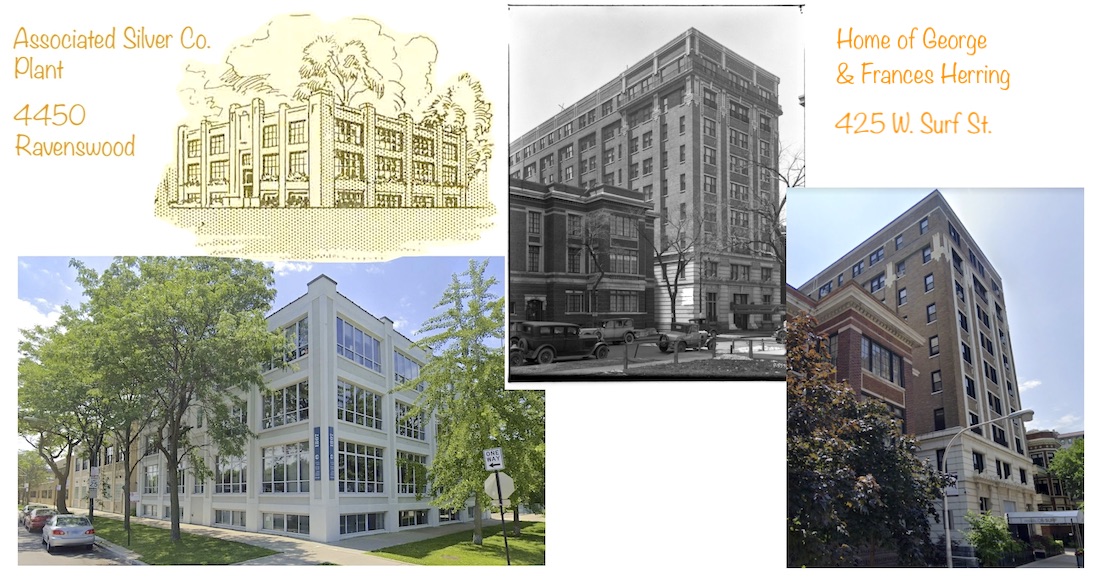
[While Associated Silver was described as a “manufacturer” of silverware in the 1920s, it’s not entirely clear how much of its stock was produced in-house vs. outsourced to established East Coast firms. The Ravenswood building (seen then-and-now on the left) might have functioned more as a warehouse and processing center than an active silversmithing plant in the classic sense.]
Both the elder and younger Lashar shared Herring’s obsession with combating silver tarnish, and much of the creative work done at the Ravenswood plant in the ‘20s was dedicated to that endeavor. More than a dozen patents were ultimately collected related to the design, manufacture, and protection of silverware, including variations on all sorts of “tarnish-proof containers.” Yourex Silver Saver appears to have been the basic consumer model—essentially little more than a cardboard tube with a treated fleece roll inside for wrapping up your cutlery. Retail Price: 25 cents.
“The Yourex Silver Saver is treated under a patent and secret process so as to prevent discoloration (tarnish) of the silver contained in it and to keep it always bright and ready for use,” says the instruction card inside the tube. “Silverware must be free from tarnish when placed in the Silver Saver. Bright silver will remain bright, but tarnished goods will not be cleaned thru any action of the container, which is not a cleaner. In other words, the Silver Saver is designed as a protection to, and not a cleanser of, silverware.”
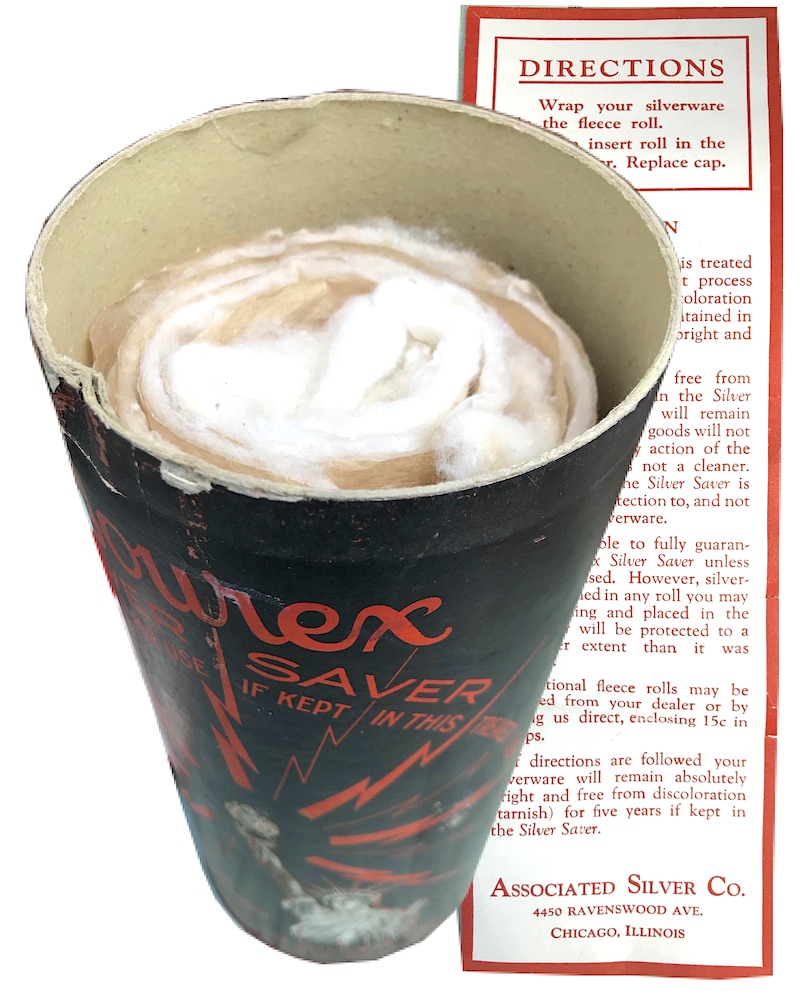 Unfortunately, as noted earlier, Silver Saver never really caught on with the public. Maybe it didn’t work particularly well, or maybe silverware dealers didn’t feel inclined to promote a product that would reduce their customers’ need to keep buying new cutlery. In any case, Herring and his team shifted focus more to commercial products, making filters for jeweler’s showcases that would help keep out the moisture and sulphur dioxide associated with tarnish.
Unfortunately, as noted earlier, Silver Saver never really caught on with the public. Maybe it didn’t work particularly well, or maybe silverware dealers didn’t feel inclined to promote a product that would reduce their customers’ need to keep buying new cutlery. In any case, Herring and his team shifted focus more to commercial products, making filters for jeweler’s showcases that would help keep out the moisture and sulphur dioxide associated with tarnish.
As the 1920s came to an end, George and Frances Herring were settled in a large apartment in the new Sheridan Surf building (425 W. Surf Street), where their daughter and son-in-law also had a residence. “The Herrings love Chicago,” the Atchison Globe noted, “and are enjoying Easy street. The only fly in their ointment is that Atchison people visiting Chicago do not look them up. The Atchison people who do not are missing something.”
Before the stock market crash, the Herrings would take guests to lavish lunches at the Edgewater Beach Hotel, wining and dining old friends from their humbler days. During the Depression, however, their profile—and that of the Associated Silver Co.—began to diminish, like the luster on fine silver.
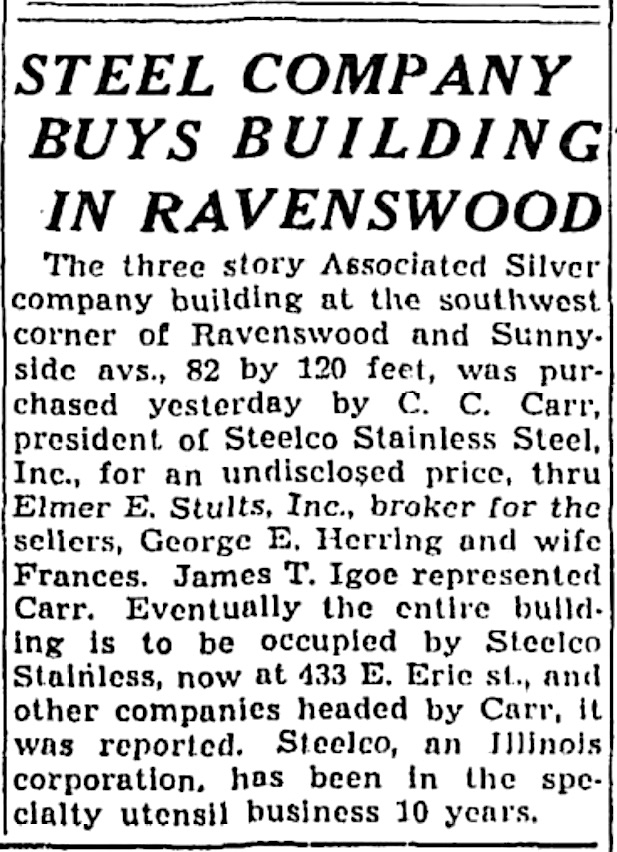
George was able to keep the business going through the 1930s, and retained ownership of the Ravenswood building, renting out much of the complex to the Scott Radio Labs. The entire Yourex brand virtually vanished from the consumer market during the decade, though, and George’s longtime secretary, Edith Vrooman, became his primary business partner, stepping into a more prominent role after the deaths of Thomas Lashar (1930) and Frank Dean (1933).
By 1941, George was nearly 70 and ready to enjoy his retirement with his wife at their new home in Evanston. He announced the liquidation of the Associated Silver Co. that year, and finally sold the Ravenswood building to another silverware maker, Steelco Stainless Steel, Inc., in 1947. Frances Herring died two years later, and George followed in 1955, at the age of 83. He was buried in the Memorial Park mausoleum in Skokie.
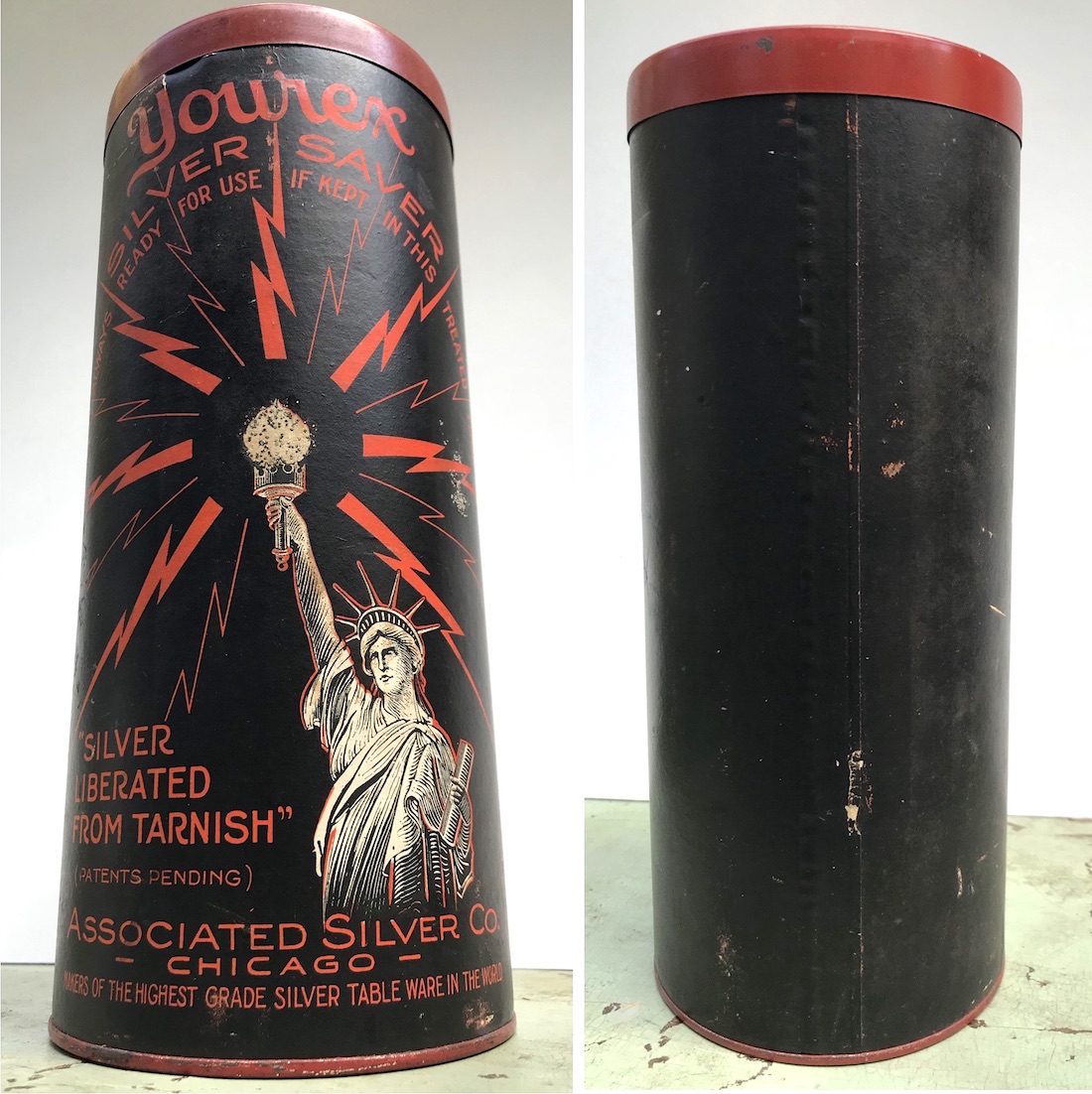
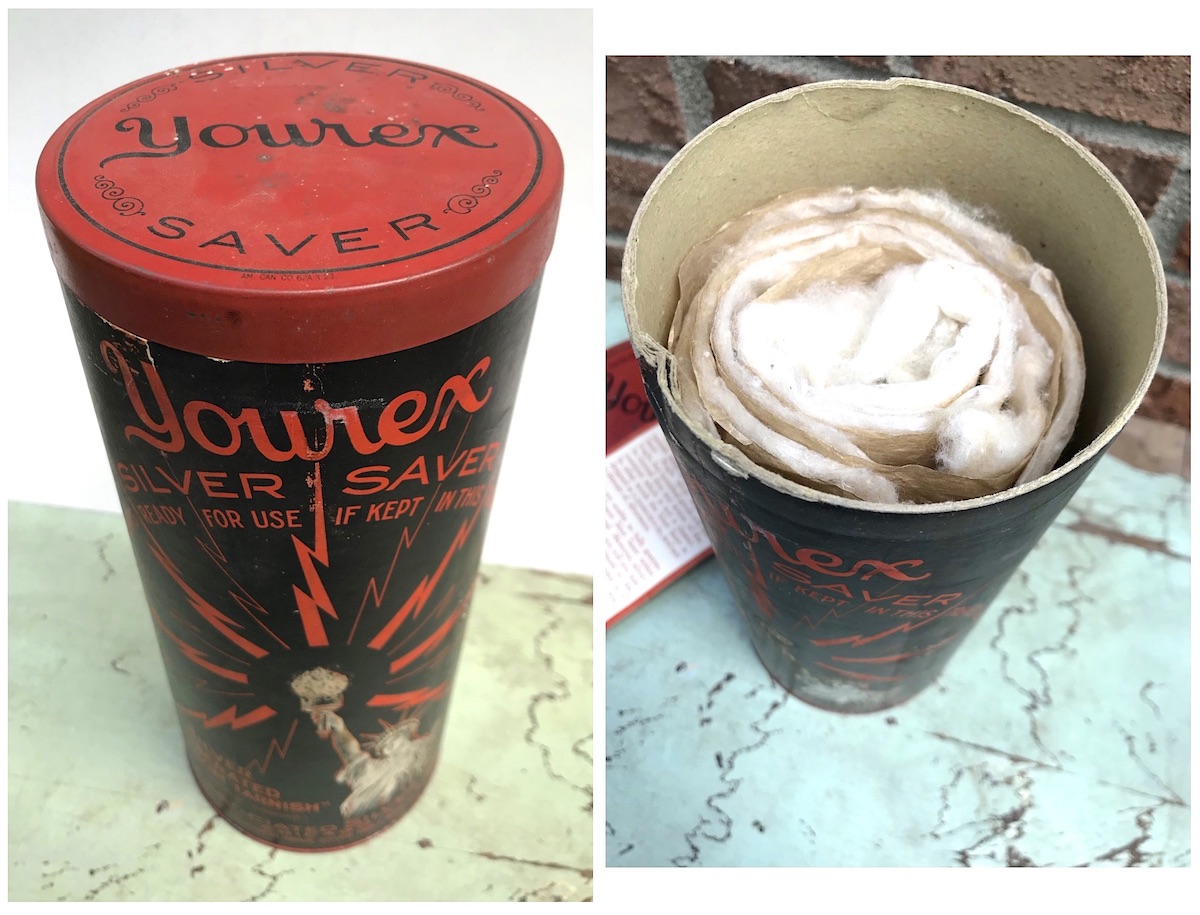
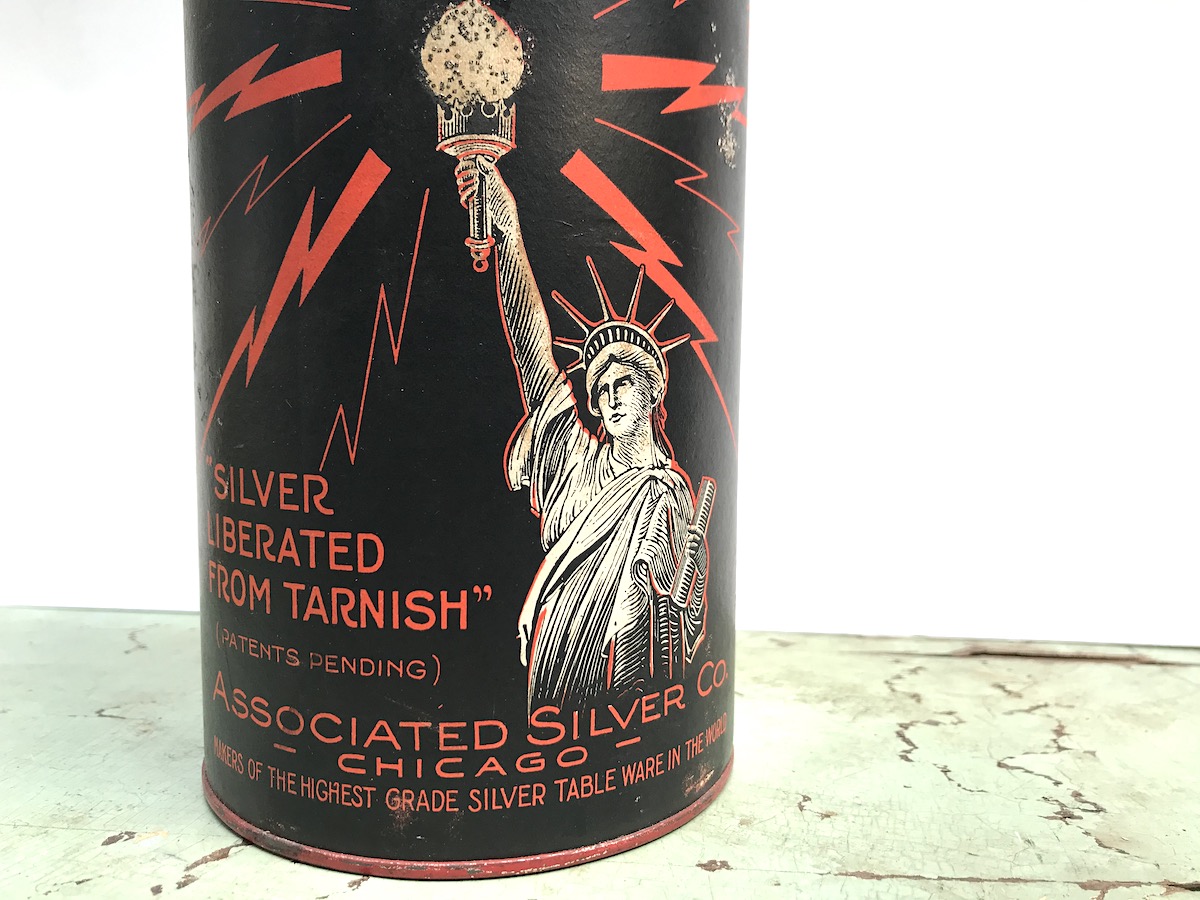
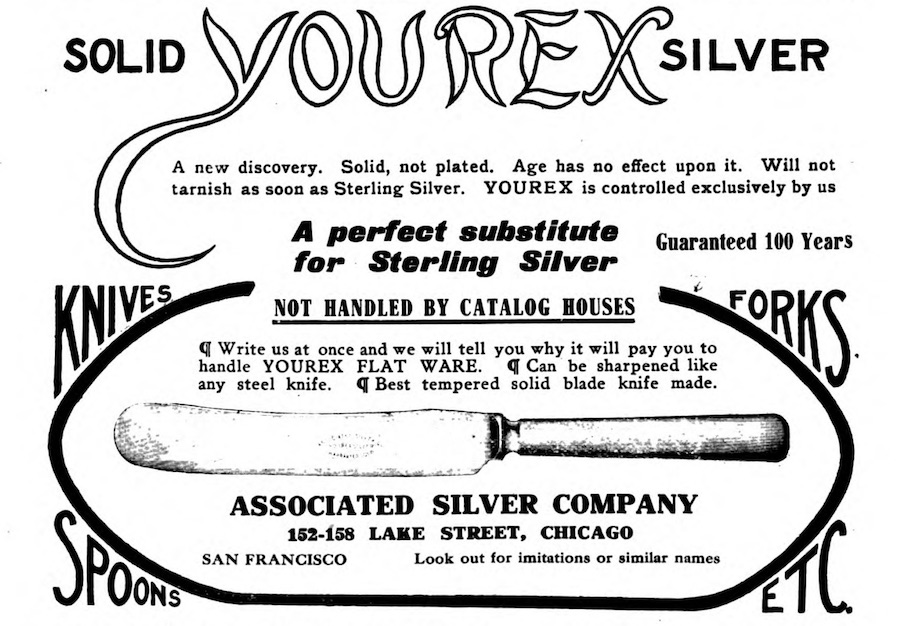
Sources:
“Window Peeping: Yeah, That’s an Airstream On Top of Ravenswood Building” – Chicago Tribune, Feb 25, 2016
US Patent 1949205A – “Means for protecting silver, etc., from tarnishing” – 1934
US Patent 1939497A – “Tarnish proof container” – 1933
“The Local Field” – Atchison Daily Globe, May 23, 1893
“If the Girls Knew . . . ” – Atchison Daily Globe, Aug 14, 1894
“City News” – Atchison Daily Globe, Dec 29, 1900
“George Herring Has Gone Into Business . . . ” – Atchison Daily Globe, April 4, 1904
“Yourex Silver Knife” – Hardware Dealers’ Magazine, November 1907
“Chicago Notes” – Jeweler’s Circular, Jan 25, 1922
Paul Atkin obit – Kansas Chief, May 11, 1922
“Exhibits at the ANRJA Convention” – Jeweler’s Circular, Sept 6, 1922
“Hold Important Meeting” – Jeweler’s Circular, May 23, 1923
“Recent Atchison Visitors in Chicago” – Atchison Globe, Oct 29, 1925
Herring Liquidates Business – Jeweler’s Circular, 1941
“Steel Company Buys Building in Ravenswood” – Chicago Tribune, Feb 9, 1947
Frances Herring obit – Atchison Globe, March 13, 1949
George E. Herring Obit – Chicago Tribune, Oct 4, 1955

If the Yourex flatware was not sterling silver but yet sold as solid silver. What exactly does that mean? I have a bunch of forks and knives in the Panama pattern.
I have a complete set of eight, Associated Silver Co. in its purple velvet lined storage box. The inside top lid still has the complete label adhered to it. Is there any value to these? Should I inquire with ‘Antique Roadshow’?
I have acquired a large set of silver that I believe to be produced by Associated Silver. On the back sides of each piece is PANAMA in block letters. Replacements, Ltd. shows a pattern with this designation, but does not match my set. Any assistance in identifying this pattern or would be greatly appreciated.
Is solid Yourex silver “Real Solid Silver”? Or is it something else all together? Like Nickel Silver or some other sort of blended metal?
I have 2 sets of 6 forks and 6 knives and was wondering if these are silver or a bit metal that looks like silver.